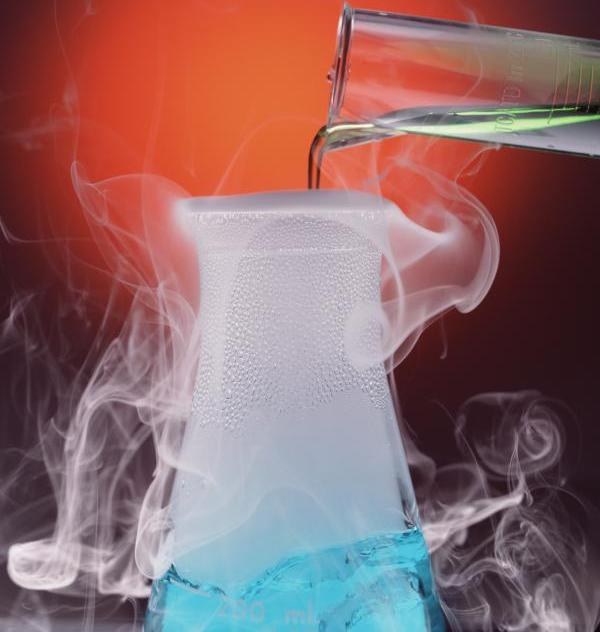Instruction
1
A molecule of sulphuric acid consists of two atoms of oxygen and sulfur dioxide. It is a liquid, which is colorless and odorless, but have a high viscosity. Concentrated sulfuric acid has the consistency of oil. In the liquid state it may be at a temperature not exceeding 300 degrees. At a temperature of 296 degrees it starts to decay. It can also be mixed with water. Sulfuric acid is very toxic and causes burns on the skin. In dissolved form it neutralizes alkalis, ammonia hydrate.
2
Also sulfuric acid capable of reacting with sodium hydroxide. Concentrated sulfuric acid is diluted by one portion of NaOH:
H2SO4 (conc.)+NaOH=nahso4 solution+H2O
For diluted sulfuric acid requires the same lye in a double size:
H2SO4 (highest.)+2NaOH=Na2SO4+H2O
In both cases, neutralization of the formed oxazole. Na2SO4 is a white substance, so in the neutralization of sulfuric acid, precipitation of a white precipitate.
H2SO4 (conc.)+NaOH=nahso4 solution+H2O
For diluted sulfuric acid requires the same lye in a double size:
H2SO4 (highest.)+2NaOH=Na2SO4+H2O
In both cases, neutralization of the formed oxazole. Na2SO4 is a white substance, so in the neutralization of sulfuric acid, precipitation of a white precipitate.
3
Additionally, sulfuric acid can interact with sodium hydroxide. Concentrated sulfuric acid is diluted by one portion of NaOH:
H2SO4 (conc.)+NaOH=nahso4 solution+H2O
For diluted sulfuric acid requires the same lye in a double size:
H2SO4 (highest.)+2NaOH=Na2SO4+H2O
In both cases, neutralization of the formed oxazole. Na2SO4 is a white substance, so in the neutralization of sulfuric acid, precipitation of a white precipitate.
H2SO4 (conc.)+NaOH=nahso4 solution+H2O
For diluted sulfuric acid requires the same lye in a double size:
H2SO4 (highest.)+2NaOH=Na2SO4+H2O
In both cases, neutralization of the formed oxazole. Na2SO4 is a white substance, so in the neutralization of sulfuric acid, precipitation of a white precipitate.
4
In addition, sulphuric acid under certain conditions neutralizes oxides of some metals. So, for example, diluted sulfuric acid combines with oxide of barium, forms a salt - barium sulfate and water:
H2SO4 (highest.)+BaO=BaSO4+H2O
Some metals, such as zinc, react well with dilute acid to form salt and hydrogen excreted:
H2SO4 (highest.)+Zn=ZnSO4+H2
H2SO4 (highest.)+BaO=BaSO4+H2O
Some metals, such as zinc, react well with dilute acid to form salt and hydrogen excreted:
H2SO4 (highest.)+Zn=ZnSO4+H2
